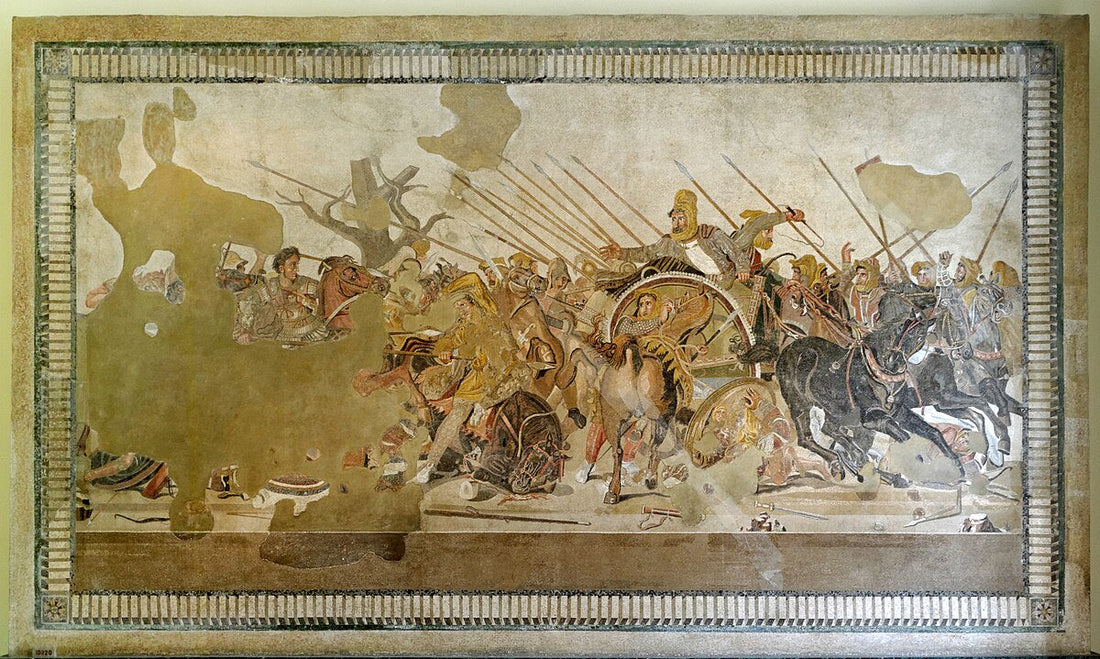
Famous Mosaics Through History and the Artists Who Shaped Them
Introduction
If mosaics are the language of tesserae, then certain works speak louder than words. Across millennia, monumental mosaics have transformed palaces, cathedrals, mosques, and cities into living galleries. They are not just decoration—they are cultural landmarks. Equally important are the artists who advanced mosaic art, from anonymous Roman craftsmen to modern innovators like Antoni Gaudí and Niki de Saint Phalle.
This chapter of The Complete Guide to Mosaics highlights the most famous mosaics in history and the artists who shaped the art form, showing how each generation reimagined the medium.
---
1. The Alexander Mosaic, Pompeii (c. 100 BCE)
Location: House of the Faun, Pompeii.
Description: A massive floor mosaic depicting the Battle of Issus, where Alexander the Great confronts Persian King Darius III.
Technique: Opus vermiculatum with extremely fine tesserae for lifelike shading.
Significance: A masterpiece of classical realism—proof that mosaics can rival painting in detail and drama.
---
2. Byzantine Mosaics of Ravenna (5th–6th Century CE)
Location: Basilica of San Vitale, Mausoleum of Galla Placidia, Italy.
Description: Luminous religious scenes with gold backgrounds and stylized figures.
Materials: Smalti with gold leaf and deep blues.
Significance: Spiritual and symbolic—designed to shimmer by candlelight, creating an ethereal atmosphere.
---
3. Hagia Sophia, Istanbul (537 CE onward)
Description: Once a Byzantine cathedral, later an Ottoman mosque, now a museum/mosque hybrid.
Mosaic Features: Christ Pantocrator, the Virgin and Child, and imperial portraits.
Significance: Blends political, religious, and artistic power. Considered one of the world’s most important mosaic collections.
---
4. The Madaba Map (6th Century CE)
Location: St. George’s Church, Madaba, Jordan.
Description: The oldest surviving map of the Holy Land, created entirely in tesserae.
Significance: Both an artwork and a historical document, combining geography with faith.
---
5. Islamic Zellige and Persian Faience (10th–16th Century)
Examples: Alhambra (Spain), Hassan II Mosque (Morocco), Isfahan mosques (Iran).
Style: Intricate geometric zellige tiles and floral mosaic faience.
Significance: Demonstrates the sophistication of Islamic design—emphasis on infinity, mathematics, and symmetry.
---
6. St. Mark’s Basilica, Venice (11th–13th Century)
Description: Over 8,000 square meters of shimmering gold mosaics covering domes, arches, and walls.
Significance: A Venetian fusion of Byzantine and Western styles. Often called “the golden church.”
---
7. Park Güell, Barcelona (1900–1914)
Artist: Antoni Gaudí.
Description: Whimsical mosaics created from trencadís (broken ceramic). Benches, fountains, and architectural surfaces come alive with color.
Significance: Reinvented mosaics as playful, organic, and modern. Inspired countless contemporary mosaicists.
---
8. The National Shrine of the Immaculate Conception, Washington D.C. (20th Century)
Description: One of the largest collections of modern religious mosaics, covering over 80 chapels.
Significance: Demonstrates the enduring relevance of mosaics in monumental architecture.
---
9. Niki de Saint Phalle’s Tarot Garden, Italy (1979–2002)
Description: A sculpture park filled with monumental figures covered in mirror and ceramic mosaics.
Style: Vibrant, surreal, feminist, playful.
Significance: Proved mosaics could be sculptural, avant-garde, and deeply personal.
---
10. Contemporary Public Mosaics
Examples:
Sonia King’s architectural mosaics in the U.S.
Emma Biggs’ abstract large-scale works in the U.K.
Isidora Paz López’s monumental murals in South America.
Significance: Mosaic art continues to thrive globally, both in fine art and community projects.
---
Influential Mosaic Artists Across Time
Anonymous Roman & Byzantine Masters
Created the foundations of mosaic technique.
Often worked collectively in guilds.
Antoni Gaudí (1852–1926)
Pioneered trencadís.
Elevated mosaics into modernist architecture.
Gino Severini (1883–1966)
Italian Futurist painter turned mosaicist.
Combined abstraction with Byzantine-inspired smalti.
Niki de Saint Phalle (1930–2002)
Transformed mosaics into monumental, playful sculptures.
Broke tradition by making mosaics feminist, surreal, and fun.
Sonia King (Contemporary)
American mosaicist, known for intricate glass and stone works.
Brings mosaics into high-end architecture and galleries.
Emma Biggs (Contemporary)
British artist focusing on abstract, painterly mosaics.
Treats tesserae like brushstrokes.
Isidora Paz López (Contemporary)
Chilean artist behind some of the largest mosaic murals in the world.
Known for her dynamic, colorful public art.
---
Conclusion
From Pompeii to Barcelona, from sacred maps to surreal sculpture gardens, mosaics have always told humanity’s most powerful stories. They outlast empires and inspire new generations of artists.
The famous mosaics we’ve explored are more than beautiful—they are cultural mirrors, showing us what people valued, believed, and dreamed. And the artists, whether known or anonymous, remind us that mosaics are a collective art, built piece by piece, like human history itself.
Mosaic art doesn’t just survive—it evolves. And its greatest works still whisper across time: look closer, because the world is made of small pieces that create a bigger picture.